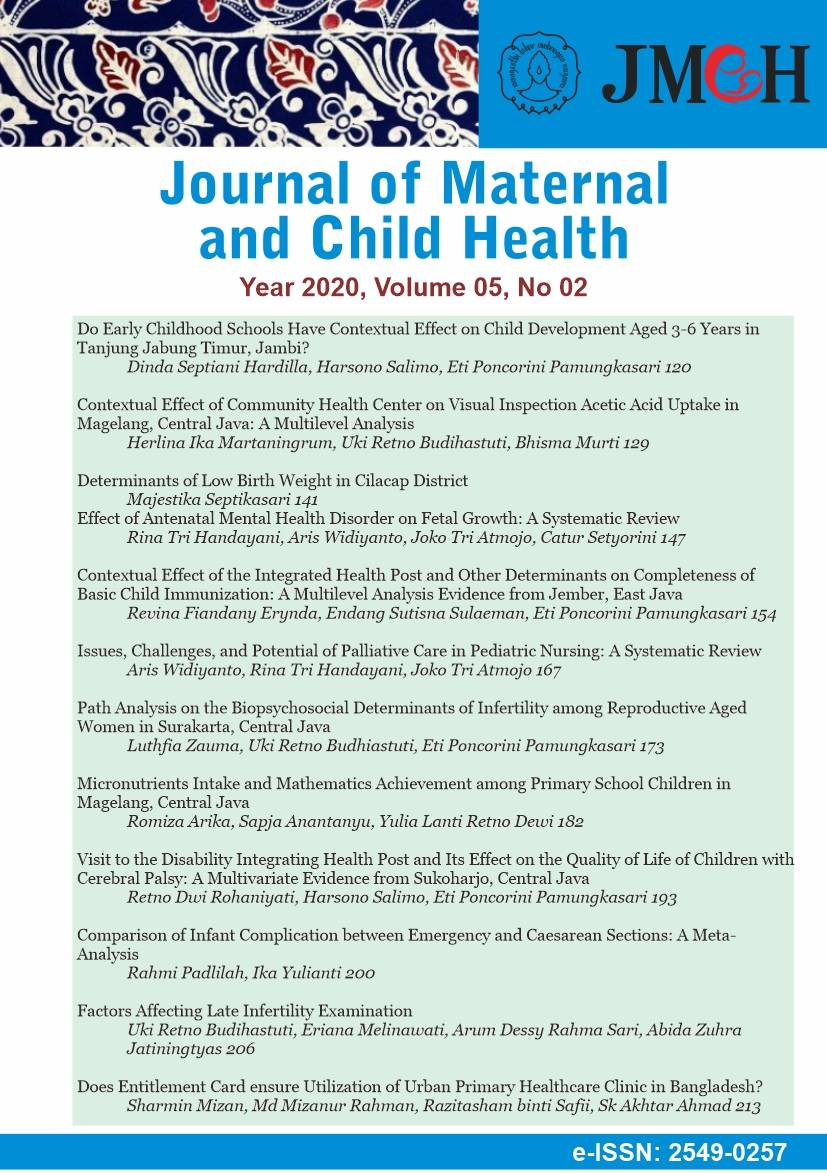Issues, Challenges, and Potential of Palliative Care in Pediatric Nursing: A Systematic Review
Abstract
Background: Palliative care is an essential right for infants and children with a life-threaten
Akard TF, Hendricks-Ferguson VL, Gilmer MJ (2019). Pediatric palliative care nursing. Annals of palliative medicine, 8(1): S39
How to Cite
References
Amery J (2012). Mapping children
Browning D, Solomon M, Initiative for Pediatric Palliative Care (IPPC) Investigator Team (2005). The initiative for pediatric palliative care: An interdisciplinary educational approach for health care professionals. Journal of Pediatric Nursing, 20(5): 326-34. doi: 10.1016/j.pedn.2005.03.004 [Crossref] [PubMed] [Google Scholar]
Caruso BAE, Howard SC, Baker JN, Ribeiro RC, Lam CG (2014). Reported availability and gaps of pediatric palliative care in low-and middle-income countries: A systematic review of published data. Journal of Palliative Medicine, 17(12): 1369-83. doi: 10.1089/jpm.2014.0095 [Crossref] [PubMed] [Google Scholar]
Chambers TL (2003). When Children Die: Improving Palliative and End-of-Life care for Children and their Families. J R Soc Med. 96(8): 419
Friebert S (2009). NHPCO Facts and Figures: Pediatric Palliative and Hospice Care in America. National Hospice and Palliative Care Organization, Alexandria, VA. [Website]
Hays R M, Valentine J, Haynes G, Geyer JR, Villareale N, Mckinstry B, Varni J W, Churchill SS (2006). The Seattle pediatric palliative care project: Effects on family satisfaction and health-related quality of life. J Palliat Med. 9(3):716-28. doi: 10.1089/jpm.2006.9.716 [Crossref] [PubMed] [Google Scholar]
Hinds PS, Oakes LL, Hicks J, Anghelescu DL (2005). End-of-life care for children and adolescents. Seminars in Oncology Nursing. doi: 10.1053/j.soncn.2004.10.008 [Crossref] [PubMed] [Google Scholar]
Kersun L, Gyi L, Morrison WE (2009). Training in difficult conversations: A national survey of pediatric hematology oncology and pediatric critical care physicians. Journal of Palliative Medicine, 12(6): 525-30. doi: 10.1089/jpm.2008.0251 [Crossref] [PubMed] [Google Scholar]
Kirk TW, Mahon MM, Palliative Sedation Task Force of the National Hospice and Palliative Care Organization Ethics Committee (2010). National Hospice and Palliative Care Organization (NHPCO) Position Statement and Commentary on the Use of Palliative Sedation in Imminently Dying Terminally Ill Patients. J Pain Symptom Manage. 39(5):914-23. doi: 10.1016/j.jpainsymman.2010.01.009 [Crossref] [PubMed]
Lindley L, Mark B, Lee SY (2009). Providing hospice care to children and young adults: A descriptive study of end-of-life organizations. J Hosp Palliat Nurs. 11(6): 315
Marston J, Boucher S, Downing J (2018). International children
Meier DE, Beresford L (2007). Pediatric palliative care offers opportunities for collaboration. Journal of Palliative Medicine. 10(2):284-9. doi: 10.1089/jpm.2006.9985 [Crossref] [Google Scholar]
Michelson KN, Ryan AD, Jovanovic B, Frader J (2009). Pediatric residents
Sidik NA, Lazuardi L, Agung FH, Pritasari K, Roespandi H, Setiawan T, Pawitro U, et al. (2013). Assessment of the quality of hospital care for children in Indonesia. Tropical Medicine and International Health, 18(4): 407
Sheetz MJ, Bowman MA (2008). Pediatric palliative care: an assessment of physicians
Thrane SE, Maurer SH, Cohen SM, May C, Sereika SM (2017). Pediatric Palliative Care: A Five-Year Retrospective Chart Review Study. Journal of Palliative Medicine, 20(10): 1104-1111. doi: 10.1089/jpm.2017.0038 [Crossref] [PubMed] [Google Scholar]
Williams-Reade J, Lamson AL, Knight SM, White MB, Ballard SM, Desai PPP (2015). Paediatric palliative care: A review of needs, obstacles and the future. Journal of Nursing Management, 23(1): 4
Yang CP, Leung J, Hunt EA, et al. (2011). Pediatric residents do not feel prepared for the most unsettling situations they face in the pediatric intensive care unit. Journal of Palliative Medicine 14(1): 25










